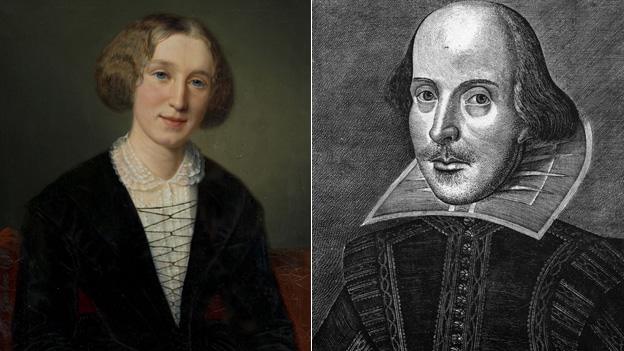George Eliot's homes in Coventry and beyond
- Published
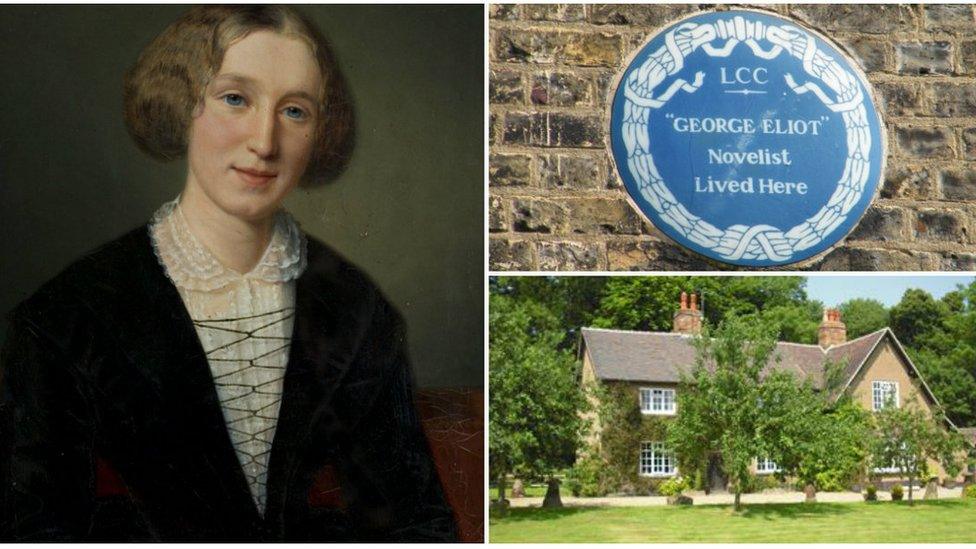
She is one of English literature's best-known novelists but, despite her fame, several of George Eliot's former homes have fallen off the tourist trail.
Fans of the author, who spent much of her life in Coventry and Nuneaton, are calling for more to be done to honour her legacy in the area.
After Coventry was named City of Culture 2021, there have been renewed calls to open up one of the author's former addresses - now a community centre - to tourists.
But what has become of the other places which helped to shape one of the country's most famous writers?

The country estate
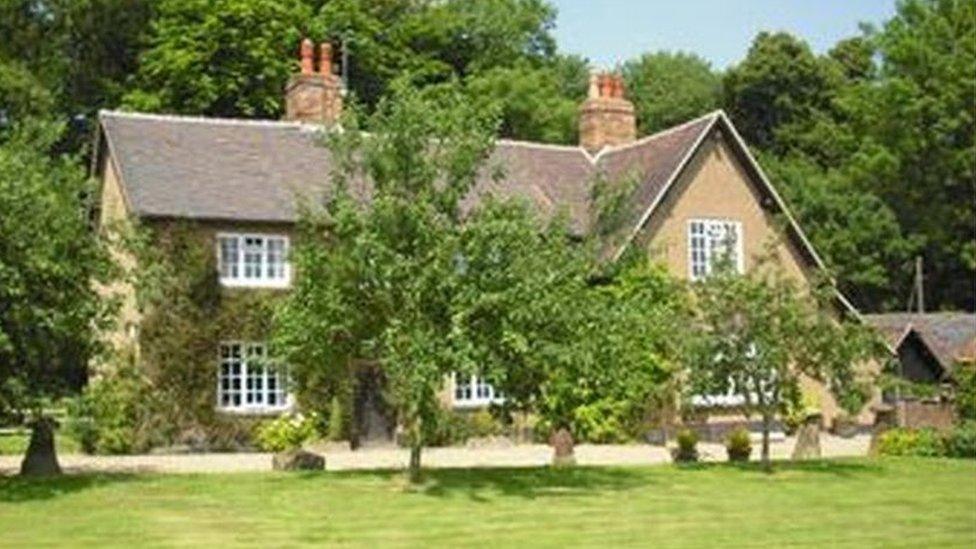
Perhaps many fans would be surprised to learn the farmhouse where Mary Ann Evans - better known as George Eliot - was born in 1819 still stands.
South Farm lies on the Arbury Estate in Nuneaton, which her father Robert was the estate manager.
Several of Eliot's novels have this Warwickshire setting as their backdrop, most notably Scenes of Clerical Life.
Today the estate - owned by the Newdegate family - is open to the public during summer bank holidays and hosts guided tours conducted by the George Eliot Fellowship.
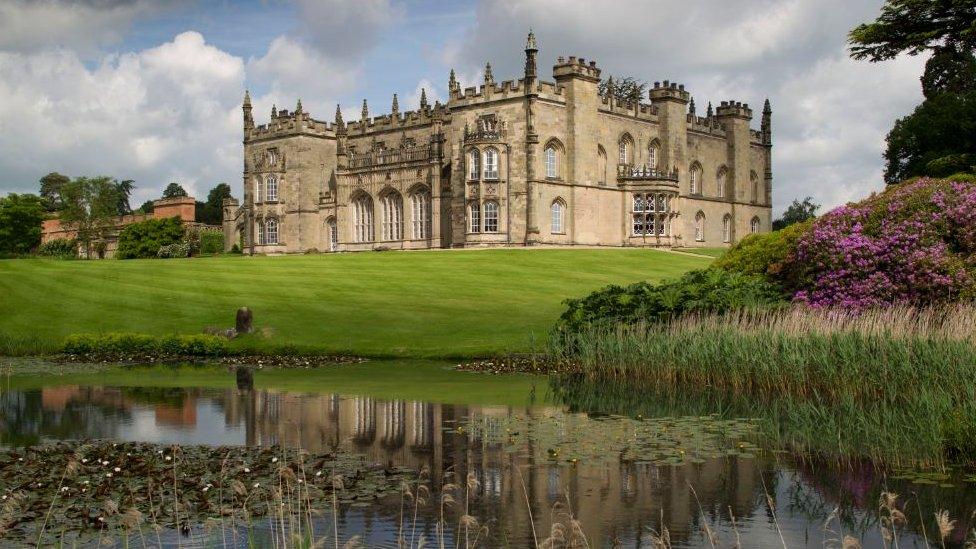
The writer was born on Arbury Estate, where her father was the manager
The chain pub
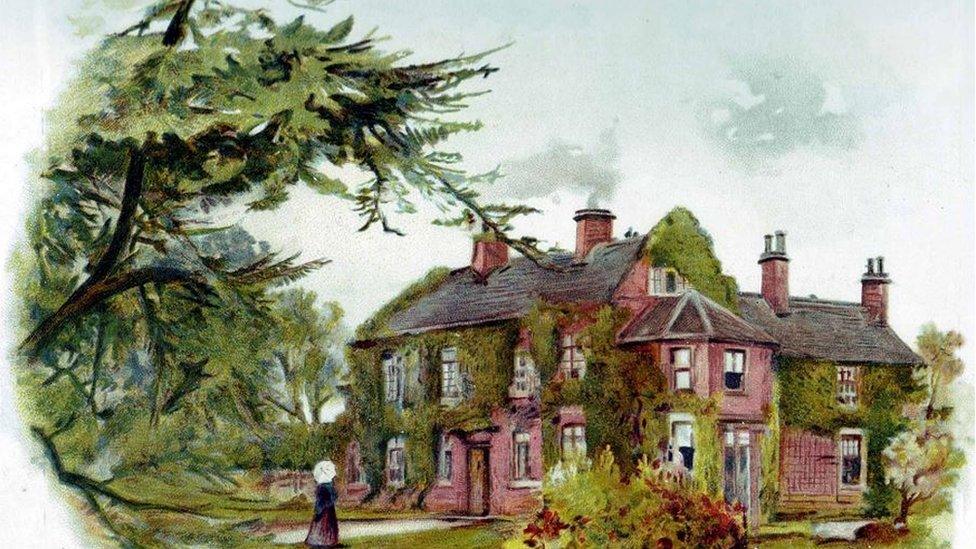
Griff House, pictured here in around 1890, is today a pub
When she was a few months old, Eliot's family moved to another estate property.
Griff House is now better known to Nuneaton residents as The Griff, a Beefeater pub and Premier Inn, surrounded by dual carriageways.

George Eliot's childhood home is surrounded by busy roads
In 2012 Whitbread wanted to demolish some outbuildings at the back of the pub, but they were saved by the George Eliot Fellowship, which hopes to turn them into a visitor centre dedicated to the writer.
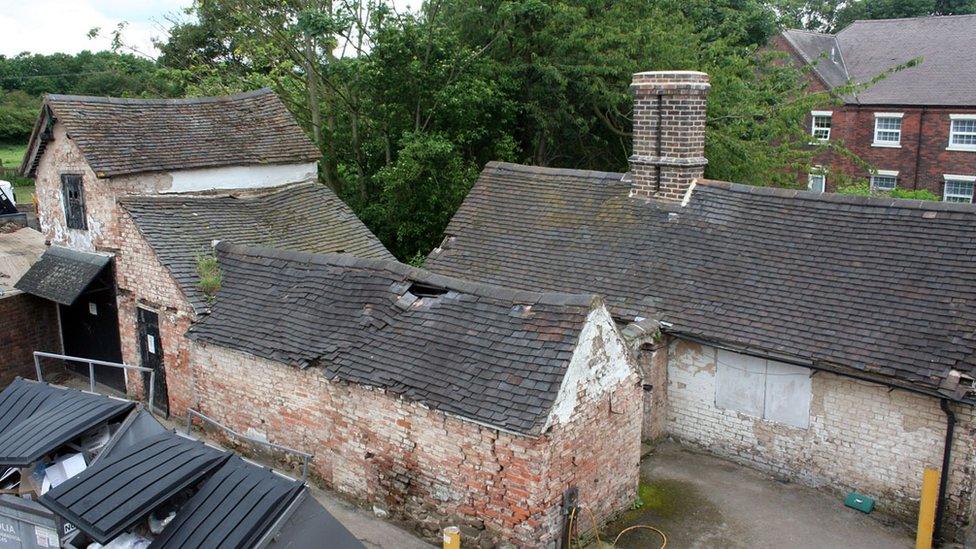
The George Eliot Fellowship hopes to turn these buildings into a visitor centre
The fellowship is applying for £100,000 of Heritage Lottery Funding and will also receive financial support from Whitbread for the scheme.
The community centre

Campaigners want more recognition for the writer at her Coventry address
Following her father's retirement, Eliot moved into a home in Foleshill, Coventry, where she acted as his housekeeper.
Her time there is thought to have provided the inspiration for her most famous work, Middlemarch.
The property, Bird Grove House, still stands but there is nothing to signify a connection to the writer.
Campaigners say more should be done to preserve it.
They are calling on the city council to help generate more recognition for one of the City of Culture's most famous residents.

George Eliot fans say the writer would be "delighted" the property is now used for educational purposes
"There needs to be at the very least some sort of signage and explanation about why this building is so important in the making of George Eliot, the writer," said John Burton, of the George Eliot Fellowship.
The property is currently run by Coventry's Bangladeshi community as a community centre and school for Syrian children.
"George Eliot was a great international writer and I am sure she would be delighted at the use the building has been put to," said Mr Burton.
The museums

Several objects associated with the writer are displayed in Coventry's Herbert Museum
Coventry's Herbert Art Gallery and Museum is home to the writer's piano, writing desk and a portrait.
Meanwhile, Nuneaton Museum and Art Gallery has a collection of the writer's pottery and furniture, as well as a reconstruction of her drawing room from one of her London homes - The Priory.
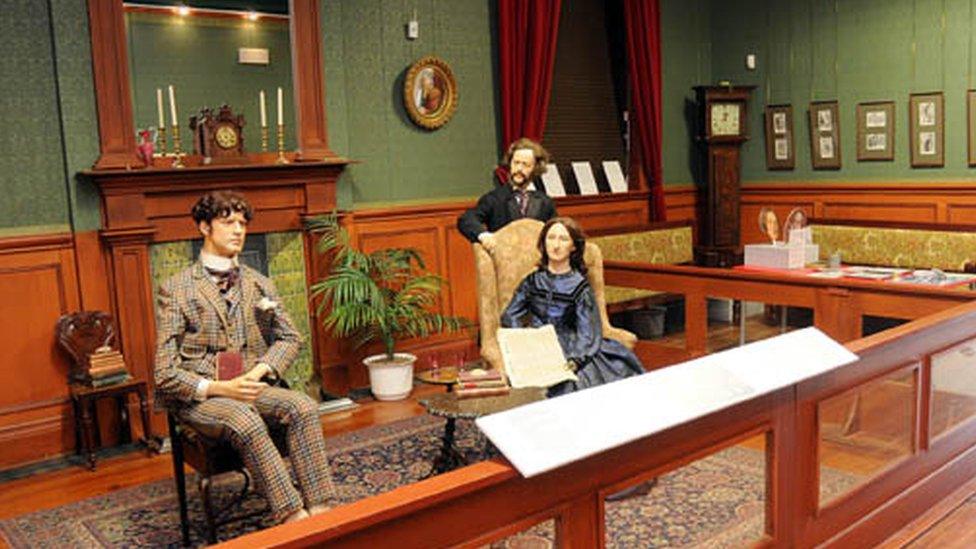
Nuneaton's museum has a reconstruction of the interior of one of George Eliot's homes
The London townhouse
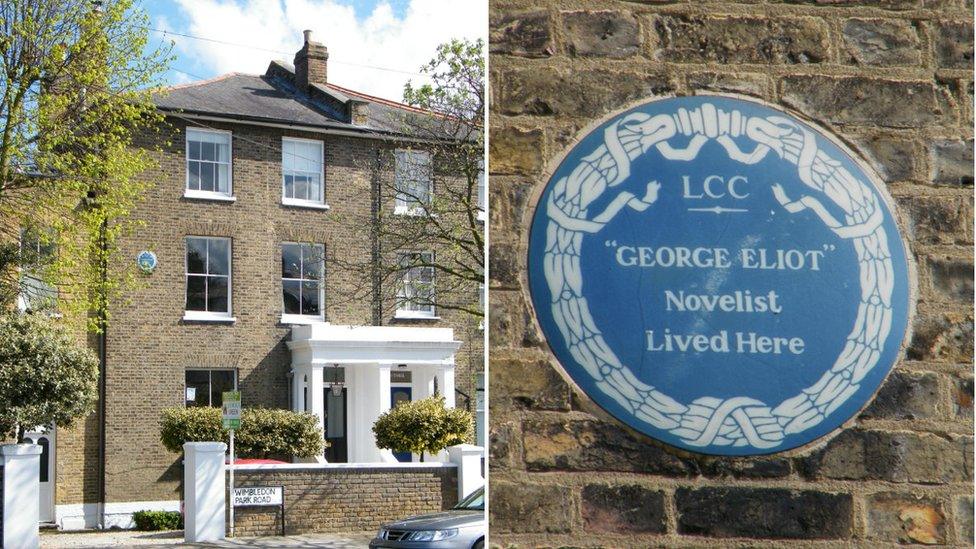
English Heritage has commemorated some of the writer's London homes
During her adult life, Eliot travelled around Europe and scandalously - in the view of Victorian society - set up home with a married man.
She and her partner, philosopher George Henry Lewes, lived in several properties in London and the South East.
English Heritage commemorates some of these private residences with blue plaques, including Holly Lodge in Wimbledon and the home where she died on Cheyne Walk, in Chelsea.
- Published1 January 2014
